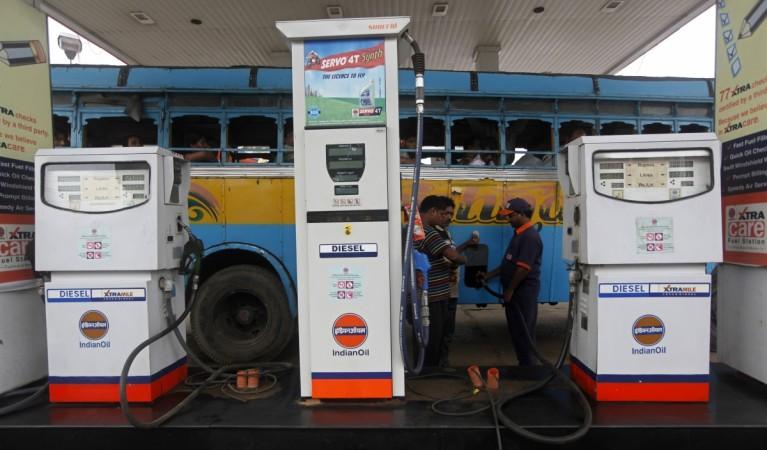
India's state-owned oil marketing companies surprised everyone with a sharp hike in retail prices of petrol and diesel, following the developments in international crude oil markets and a weakening Indian rupee.
Reversing the price cuts in April, the companies raised petrol prices by ₹3.96 per litre and diesel by ₹2.37. Last month, petrol prices were slashed by a cumulative ₹1.29 per litre and diesel by ₹2.51 per litre.
"The movement of prices in international oil market and Rupee-USD exchange rate shall continue to be closely monitored and developing trends of the market will be reflected in future price changes," Indian Oil Corporation (IOC) told NDTV Profit.
Current spike in petrol and diesel prices is in line with the increase in global crude oil prices, which are trading at their highest levels in four months.
Brent crude oil prices continue to trade above $66 per barrel, up $20 from its January low of $46 per barrel, supported by a decline in US oil production.
A plunge in crude prices witnessed since June last year has led the US oil drillers to shutdown the rigs.
However, many analysts warn that investors should not be misled by the current rally in oil prices, as higher prices will attract the US oil drillers to resume production.
"We believe that the latest price surge is premature and excessive – nonetheless, the impetus which is driving it is relatively strong, meaning that a further albeit speculative short-term price rise is probable," said Commerzbank Corporates & Markets in a note.
Besides, oil exports from Iran which are expected to hit the already oversupplied market, after a final deal on its nuclear programme in June, are likely to weigh in on the prices in the coming months.
Further, domestic oil companies were also hit by unfavourable currency movements in April, with the rupee depreciating by nearly 2% in the month to 63.5 per dollar.
"The recent weakness would appear to be due to domestic developments, such as the renewed widening in the trade deficit and rising uncertainty over tax policy," said Capital Economic in a note.
The rupee is expected to come under pressure in the second half of the year once expectations on interest rate hike by the US Federal Reserve peak, leading to sharp outflows that weaken the currency.

















